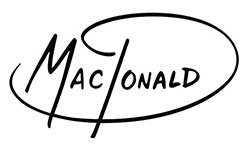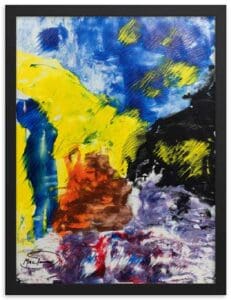From Monet to MacDonald, explore how Modern Art Paintings reshaped creativity and why their influence still drives today’s artists, collectors, and culture.
Modern Art Paintings: – And Why It Still Matters Today!
- Defining “Modern Art”
“Modern art” does not simply mean “new art.” In art-historical terms, the Modern era spans roughly the 1860s through the mid-20th century, when painters broke decisively from academic traditions. Impressionists captured fleeting light with visible brushstrokes; Cubists fractured form to depict multiple viewpoints at once; Abstract Expressionists poured, splattered, and gestured pure emotion onto canvas. Modern Art Paintings from this era privilege experimentation, personal vision, and a willingness to defy convention—qualities that separate them from the academic realism that dominated earlier centuries.
- Key Principles That Shaped Modern Art Paintings
| Principle | Impact on the Canvas | Lasting Influence |
| Rejection of Realism | Artists abandoned strict likeness, focusing on mood and perception. | Opened the door to abstraction, minimalism, and conceptual art. |
| Emphasis on Process | Visible brushwork, unconventional materials, and industrial pigments foregrounded how a piece is made. | Inspires today’s mixed-media and digital practices. |
| Individual Subjectivity | The artist’s psyche became central—think Kandinsky’s spiritual abstraction or Frida Kahlo’s symbolism. | Continuing in autobiographical and identity-driven work. |
| Dialogue with Technology & Society | Futurists embraced the machine age; Pop artists later riffed on mass media. | Mirrors today’s intersections of art with social media, AI, and XR. |
- Modern vs. Contemporary: Clearing Up the Jargon
Many people use modern as a synonym for contemporary, but galleries and museums draw a line:
- Modern Art Paintings: c. 1860–1960s; Monet to Rothko—innovation within paint, form, and surface.
- Contemporary Art: roughly 1970s–present; Damien Hirst to Kehinde Wiley—innovation often extends beyond paint into installation, performance, and digital realms.
However, Modernism’s core ideals—experimentation, formal invention, and social commentary—remain the conceptual DNA of contemporary practice.
- How Modern Ideas Animate Today’s Art
- Abstraction Reinvented
- Contemporary painters like Julie Mehretu layer gestural marks reminiscent of Abstract Expressionism with cartographic lines and data-driven imagery, proving that the Modern appetite for abstraction can converse with 21st-century geopolitics.
- Figuration with a Twist
- Artists like Jordan Casteel and Amy Sherald reclaim figurative Modern Art Paintings’ bold color and flattened planes to narrate today’s conversations on identity and community.
- Material Adventures
- Modernists experimented with sand, collage, and house paint. Likewise, current artists incorporate recycled plastics, LED light, or even algorithms, echoing Modernism’s material curiosity in a digital age.
- Social Critique & Utopian Visions
- From Diego Rivera’s murals to Banksy’s Street interventions, the Modern mandate to address industry, politics, and inequality persists. Today’s painters fuse Modern graphic punch with urgent calls for climate action, racial justice, or techno-ethics.
- Collecting and Curating Modern Art Paintings in 2025
- Market Resilience: Blue-chip Modern works by Picasso or Warhol remain foundational assets, but mid-century women, BIPOC, and Global South Modernists are seeing long-overdue price corrections.
- Hybrid Exhibitions: Museums often pair a Modern master with a younger artist—“Matisse and the Modern Gaze: Dialogues with Njideka Akunyili Crosby”—to illuminate lineage and relevance.
- Digital Access: Virtual-reality walkthroughs and NFT certificates bring Modern Art Paintings into crypto-registries, ensuring provenance while expanding audiences.
- Why Modern Art Still Feels “Modern”
At its heart, Modern art championed freedom of method, viewpoint, and emotion. That ethos of liberation remains magnetic for artists pushing boundaries today. Whether in a brushy Gerhard Richter abstraction or a glitchy AI-driven canvas, the spirit of Modern Art Paintings endures, challenges norms, embraces innovation, and expresses the pulse of one’s era.
Takeaway
Understanding the historical meaning of Modern Art Paintings enriches our appreciation of today’s artistic experiments. The next time you encounter a cutting-edge canvas—whether hanging in a gallery or streaming through your feed—look for those Modern fingerprints: bold form, fearless technique, and a drive to remake the visual language for a new moment.
Click for more articles in All Articles.
Explore a broad array of Original Paintings, Fine Art prints, Abstract Signature shirts, and Art Gifts.
Lifetime Collector Guarantee applies to Originals and Mixed-Media works. © MacDonald Gallery, Adwin Blake, Curator.


Buying Your First Fine Art Painting: 10 Key Considerations (Beginner’s Guide)
6 Must-Know Facts About Peter Max Prints
MacDonald Painting “Two Wanted Men” to be put on Display in Columbia Studio A Lobby